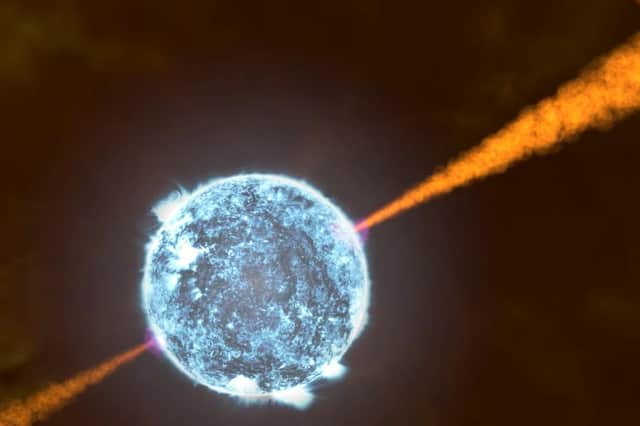Queen's University expert tells of breakthrough using James Webb space telescope to study one of the most energetic events ever observed - shedding light on where much of the periodic table comes from


Dr Matt Nicholl, a reader in astrophysics at Queen’s University Belfast, was part of the international team of stargazers who wrote the scientific paper explaining their discovery, which was published today in the prestigious journal Nature.
Whilst it has long been understood that many of the medium-heavy elements of the universe, things like magnesium and oxygen, are produced when stars explode, it was less clear where exactly the heavier elements on the periodic table come from.
Advertisement
Hide AdAdvertisement
Hide AdDr Nicholl told the News Letter that their investigations into this phenomenon have their roots one billion years ago, when two neutron stars smashed into one another.


The energy from this cosmic car-crash finally arrived at Earth in March of this year, coming in the form of a “gamma ray burst” – an incredibly violent and bright jet of energy, of which this was the second most powerful example ever observed.
Neutron stars are incredibly dense and heavy; they may only be "the size of Belfast," but "a spoonful of one would weigh 100 million tonnes,” said Dr Nicholl.
"We think that when two of these things collide, that's where nearly all of the heavy elements of the universe come from," said Dr Nicholl.
Advertisement
Hide AdAdvertisement
Hide Ad"It's very hard to make heavy elements. You have to really bombard atoms with lots and lots of particles to build up to something as heavy as gold or platinum.
"We think these are the only objects in the universe that are actually dense enough to do that – whenever they smash into each-other, and you put enough energy in."
If neutron stars were just slightly heavier, they would collapse to a point under their own extreme gravity and become black holes.
The existence of this class of star is lucky for us, because if two black holes bashed into each other it would just create a bigger black hole, from which virtually nothing would escape.
Advertisement
Hide AdAdvertisement
Hide AdInstead, much of the heavier elements needed for life are able to escape from collisions between neutron stars.
Dr Nicholl said that the collision they studied firstly resulted in a gamma ray burst (a flash lasting perhaps a few seconds), followed by a "kilonova" (a more conventional-style explosion involving a ballooning ring of glowing debris that can be visible for a few weeks).
"This is where all the material is – all these new heavy elements are in this kilonova debris that's been thrown out,” said Dr Nicholl, who also said that QUB’s Professor Stephen Smartt was among the team working on the study.
"In this specific example, we saw a gamma ray burst first of all; it happened to be the second-brightest gamma ray burst we've ever seen.
Advertisement
Hide AdAdvertisement
Hide Ad"So we pointed our telescopes at it and we saw, over the next days or weeks, this gradual, very red explosion emerge out of this spot.
"The very, very red explosion looks red because all these very heavy elements are very good at absorbing blue light.
"But it's very, very hard to prove that by finding a specific element.
"It's such a mixture of material, and it's moving so fast – all the different elements get blended together, and it's hard to pick one out."
Advertisement
Hide AdAdvertisement
Hide AdThanks to the new James Webb space telescope, launched in December 2021, he and his colleagues were able to study the kilonova in never-before-seen detail.
"We saw an emission we could uniquely identify as tellurium,” he said.
"If you see tellurium, you know heavy elements have been produced in the explosion.
"It's kind of one of the first times we've been able to say specifically: Yes, you can get very heavy elements produced by these kinds of collisions that we always thought did this kind of work."